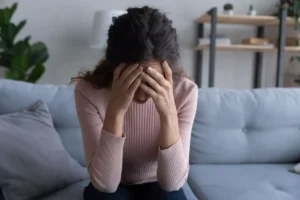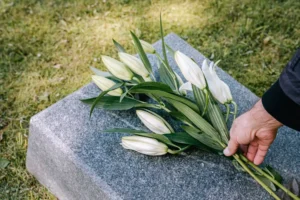A few years ago, the students and faculty of Michigan State University came together to celebrate the Spartans’ victory in the finals of the NCAA men’s basketball championship. That joyful scene stood in contrast to events three years earlier that also brought people in East Lansing together: shock and sorrow over a series of suicides among Michigan State students. Within three months, six Michigan State students had taken their own lives.
Between January 16 and April 15, 1997, the six students, all of them males, committed suicide. Three of them shot themselves to death; two died by hanging; and the sixth threw himself in front of a train. Apart from their enrollment at Michigan State, and the circumstances of their deaths, the students appeared to have little in common.
While the extent of the East Lansing outbreak may have been unusual, there’s nothing unusual about college students taking their own lives. On the contrary, what happened in East Lansing conforms to what we know about suicide.
According to the American Federation For the Prevention of Suicide (AFPS), suicide is the third-leading cause of death among Americans between the ages of 15 and 24, and it’s the second- leading cause of death — behind only traffic accidents — among college students. In addition, the suicide rate is higher among 19- to 24-year-olds enrolled in college than it is for those who aren’t enrolled.
These numbers tell only part of the story. Since 1950, the suicide rate among college-aged women has more than doubled, while the rate among college-aged men has tripled.
Even suicide “clusters” — like those in East Lansing — aren’t all that uncommon. As Kay Redfield Jamison, a professor of psychiatry at Johns Hopkins points out in her book Night Falls Fast: Understanding Suicide, the past 10 years have seen clusters in communities as different as South Boston and Fairfax County, Virginia. Nor is Michigan State the only college campus to witness a cluster of suicides in recent years.
But all the talk of numbers and patterns still leaves us with the question: “Why do people, especially the young, take their own lives?” The most common factor is mental illness — in particular, “mood disorders” such as clinical depression and manic-depressive illness, also known as bi-polar disorder.
Clinical depression is a medical condition “which paralyzes all the otherwise vital forces that make us human,” leaving us with a life that is “bloodless” and “painless.” Manic-depressive illness adds the element of mania, which leaves people feeling exultant, grandiloquent, expansive and irritable. Contrary to what you may have heard, the holidays are not the peak time for suicide. Late spring and early summer are.
As Jamieson notes, the presence of mood disorders not only makes it more likely that a person will attempt suicide, but also will incline them towards more “serious” efforts in that direction — that is, efforts that exhibit more forethought and planning.
The impact of mood disorders, whose average onset is between 18 and 25 years of age, is heightened by a staple of college life: drinking. Anyway you slice it, alcohol and mental illness is a bad, often lethal, combination. Many people with depression drink, or use drugs, to relieve their symptoms. But, as Jamieson puts it, alcohol and drugs “more often worsen [the pain]” they’re intended to alleviate. They “undermine the individual’s willingness to seek out and receive good clinical care” and “sabotage the effectiveness of prescribed treatment.” They reduce inhibitions and increase risk-taking, thus reinforcing whatever tendencies toward self-destruction we may possess.
Although medical and personal factors get the lion’s share of attention, cultural factors are not faultless. Nihilism — which Thomas Hibbs of Boston College defines as “spiritual impoverishment” and “shrunken aspirations” — has come to characterize much of American culture over the past 50 years. To put it plainly, today’s Americans, in particular the young, have more difficulty in identifying something that provides purpose and meaning to their lives.
Additionally, the institutions that traditionally transmitted “meaning,” such as church and family, have less influence on us than they did 50 years ago. Our popular culture, whose influence has increased as church and family have seen their influence wane, is, as Hibbs writes in his book, Shows About Nothing, steeped in nihilism. This pop culture nihilism, as depicted in television and movies, can spiritually impoverish us in two principle ways. The first is exemplified by movies such as The Exorcist, Silence of the Lambs, or, more recently American Psycho, which is based on the controversial Bret Easton Ellis novel. In these films, evil is real, personified by what Hibbs calls the “demonic anti-hero.” What’s missing is any sense of a countervailing force for good. We are left feeling, as Hibbs puts it, that “ultimate justice is elusive, [and] we are tempted to see the underlying force as malevolent and punitive….”
Or, life can appear to be totally trivial and superficial. Much of our popular, or more precisely, mass, culture is so busy striking an ironic pose, it leaves viewers with the impression that engaging our passions and believing deeply in something is in bad taste. So we’re left with two conclusions: Horror teaches us that “life’s a [expletive deleted] and then you die,” and our lighter fare agrees with Macbeth that life “is a tale told by an idiot, full of sound and fury, signifying nothing.”
For those already in the grip of depression, such a message cruelly tells them that there really is no hope — nothing to live for. It tells them that this is the way life really is. What’s more, it loosens their ties to the very people who could save them: their family and the church. It makes others less confident in countering the culture and less persuasive.
Making matters worse is that, unlike Hamlet, whose fear of God and knowledge that his life wasn’t his own — “conscience doth make cowards of us all” — stayed his hand, we have no such belief. On the contrary, we’ve embraced a personal autonomy that makes every individual the arbiter of life and death. We believe that our person is ours to do with as we please. States such as Oregon have even created a “right” to have a physician assist you in the act of killing yourself.
When you tell people that life isn’t worth living and, what’s more, it’s not sacred, is it a surprise when increasing numbers of them choose to end their life? The surprise would be if they didn’t.
* * *
I have manic-depressive illness. I’ve been up close and personal with the kind of depression that feels like someone sucked all of the oxygen out of the room. I know all about the infelicitous brain chemistry than can make it almost impossible to get out of bed. I also know about the flip side: the exhilaration that makes you scarily productive and creative. I know what it’s like to not want to sleep because you want to record your “genius” for posterity. I’m here because of medicine.
But I also know that medicine isn’t a substitute for faith. Medicine can only treat our symptoms. This can keep us alive, but it can’t give us a reason for living. We have to want to get well, and as any shrink will tell you, half the battle in treating people with mood disorders is getting people to take their medicine — especially since some of the drugs used have side affects, at least initially.
Without faith, we’re stuck with what the New Testament calls “bios.” That’s physical life scarcely indistinguishable from plants and animals. We eat, we breathe and we sleep. Faith, specifically faith in Jesus Christ, is necessary to experience “Zoe,” life that’s filled with joy and purpose. No medication can provide you with “Zoe.” And the fact that you have a mood disorder doesn’t preclude you from experiencing it.
The English poet Lord Byron once told a friend that while he had thought of killing himself on many occasions, he was kept from doing so by thought of how happy it would have made his mother-in-law. Mother-in-law jokes aside, Byron was on to something that our culture seems to have forgotten: our moods, and the biology behind them, don’t have to have the final word. The best suicide prevention strategy starts with giving people a reason to choose life.
* * *
Focus on the Family has counselors and care specialists who are available weekdays to talk with you, provide information and encouragement, suggest resources, give referrals and pray with you. If you are struggling with depression or mood disorders and would like to talk with one of them, you can find more information here.
Copyright 2000 Roberto Rivera. All rights reserved.










